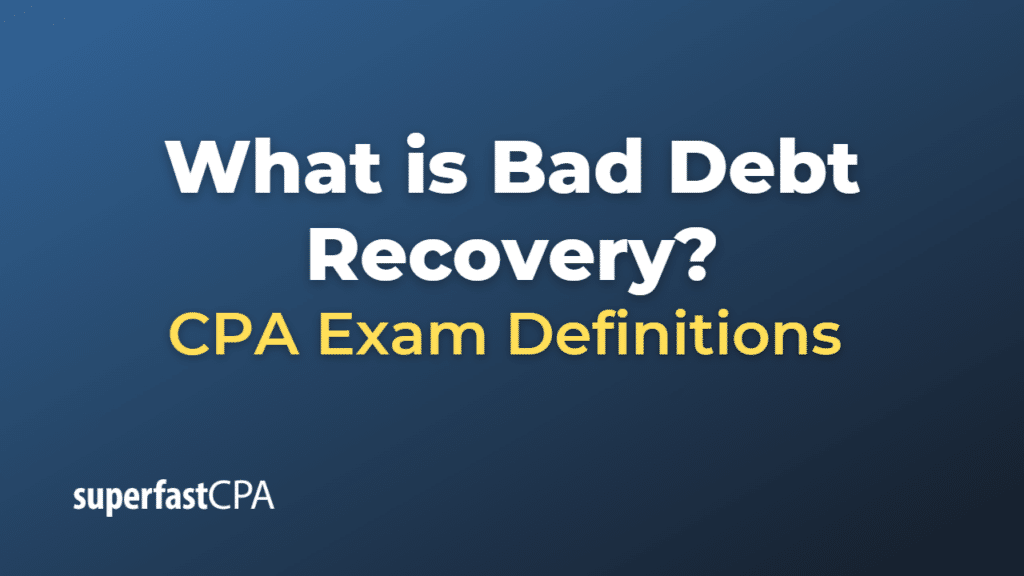Bad Debt Recovery
Bad debt recovery refers to the process of receiving payment from a debtor after it was previously deemed uncollectible and written off as a bad debt. When a business writes off a bad debt, it assumes that the debtor will not pay the outstanding amount. However, if circumstances change and the debtor eventually pays part or all of the previously written-off amount, this payment is considered a bad debt recovery.
When a company recovers bad debt, it needs to reverse the write-off that was initially recorded. This involves the following steps:
- Debit the accounts receivable account for the amount recovered.
- Credit the bad debt expense account for the same amount.
This accounting adjustment restores the accounts receivable balance and reduces the bad debt expense. It’s important to note that bad debt recovery is only recorded when the payment is actually received, not when the debtor promises to pay the amount.
Example of Bad Debt Recovery
Here’s an example to illustrate the concept of bad debt recovery:
Company ABC sells products on credit to its customers. In 2022, it sold $5,000 worth of products to Customer X on credit terms. Unfortunately, Customer X faced financial difficulties and was unable to pay the outstanding balance. After multiple attempts to collect payment, Company ABC decided to write off the entire $5,000 as a bad debt in their financial records.
The journal entries for the write-off in 2022 would be:
- Debit Bad Debt Expense: $5,000
Credit Accounts Receivable – Customer X: $5,000
In 2023, Customer X’s financial situation improves, and they unexpectedly pay $3,000 of the previously written-off amount to Company ABC. Since Company ABC had already written off the entire $5,000 as a bad debt, they now need to record the bad debt recovery for the $3,000 received.
The journal entries for the bad debt recovery in 2023 would be:
- Debit Accounts Receivable – Customer X: $3,000
Credit Bad Debt Expense: $3,000
By recording the bad debt recovery, Company ABC restores $3,000 to its accounts receivable balance and reduces the bad debt expense accordingly. It is important to note that the bad debt recovery is recorded only when the payment is actually received, not when the debtor promises to pay the amount.













